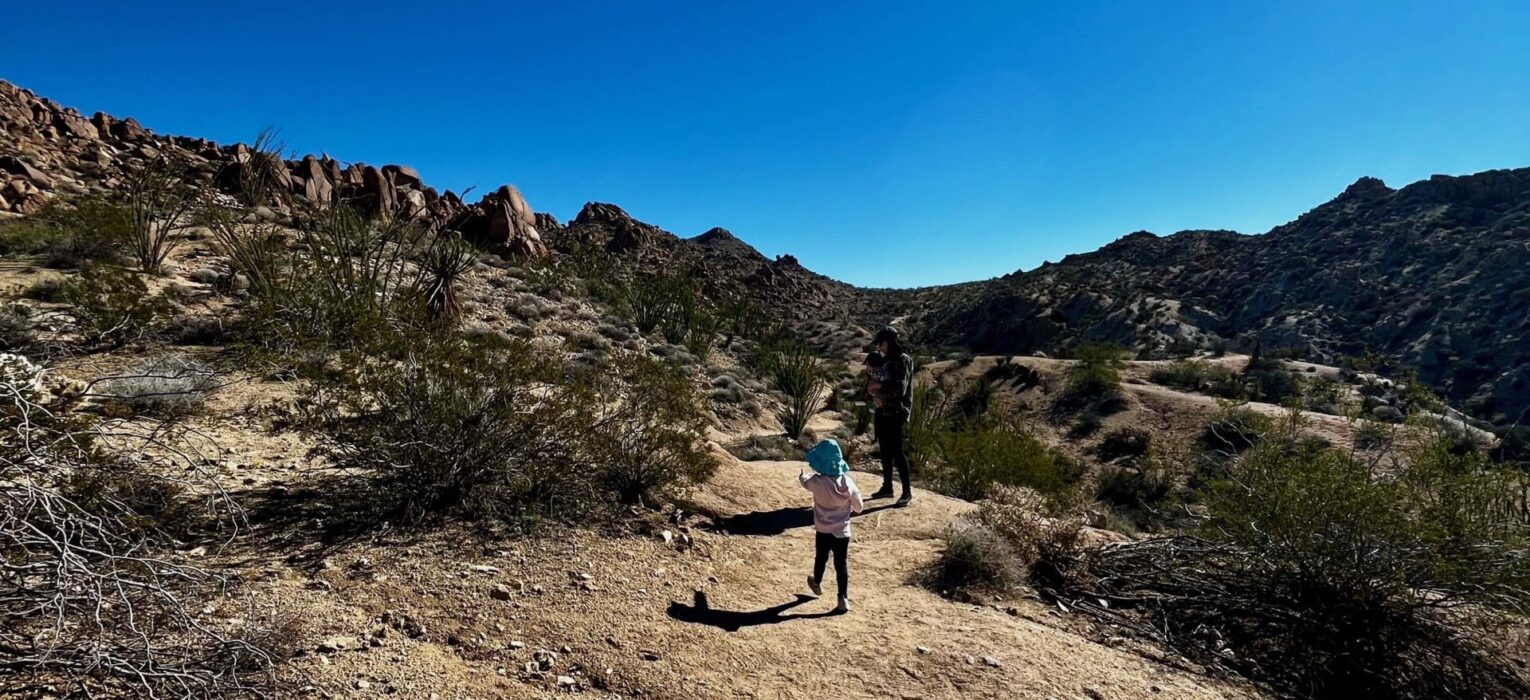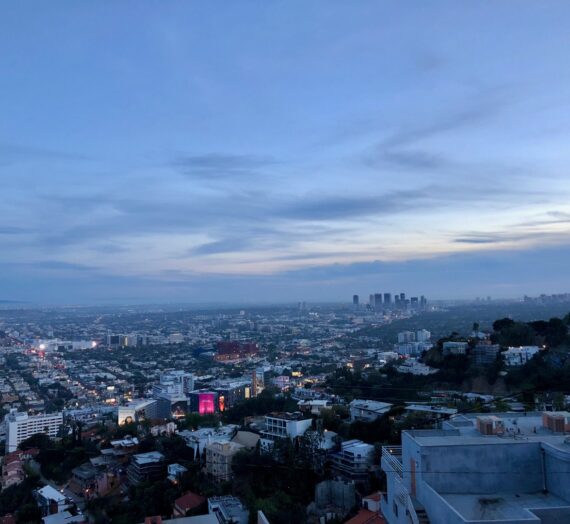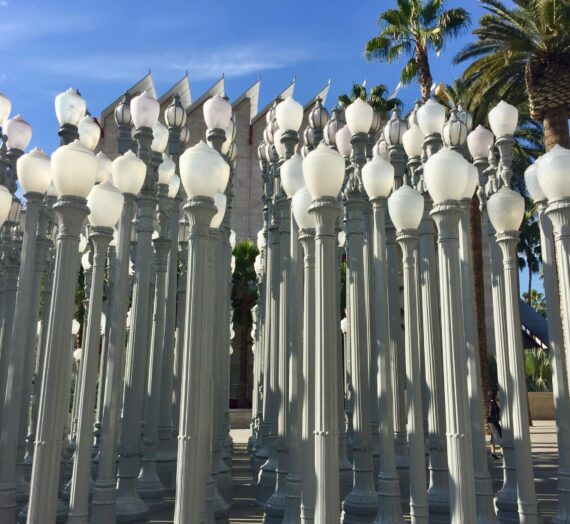Out in the Southern California desert, you’ll find Joshua Tree National Park. The park – which is 1,242 square miles, or just a bit bigger than Rhode Island – is known for its rock formations, surrounding mountains, and namesake Joshua trees. It’s also a popular tourist destination, attracting more than two million visitors each year. With an area so vast, remote, and often crowded, it’s essential to be prepared before planning a trip to Joshua Tree. And if you’ve got little ones along for the ride, that adds a whole extra layer of necessary preparedness.
Here are some tips for visiting Joshua Tree National Park with a baby and a toddler.

Go during the right time of year
Out in the desert, temperature extremes are the norm. Make sure to select a time of year that suits your whole group best. While you may not mind a bit of heat or freezing temps, these can range from uncomfortable to unsafe for little ones.
During the spring, temperatures are generally mild (and you might be treated to some desert wildflowers). Late fall and winter can also be pleasant times to visit, though nighttime temperatures can dip low (so keep this in mind if you plan on camping).
Summer, on the other hand, can be extremely hot (around 100 degrees F or 37 degrees C on average during the day), so it’s not a great time to visit with little kids. Also take note that flash flooding is possible at any time, but is most common during the late summer and early fall.

Check weather and road conditions
As your visit approaches, make sure to check the weather forecast. In the event of an unseasonably hot spring day or random thunderstorms, you may need to adjust your plans.
Similarly, always check road conditions for any closures. This goes for any national park, really, though you especially don’t want to be taking any chances with little ones along. All park alerts and conditions can be found here.

Plan appropriate activities
There’s plenty to do in Joshua Tree, like hiking, sightseeing, rock climbing, and so forth. However, when you’ve got a baby and a toddler with you, your options are more limited.
For hiking, plan for shorter routes. If you’re spending your time near the South Entrance, the Bajada Nature Trail is a .25 mile loop where you can check out plants of the Colorado Desert. There’s also Cottonwood Spring, a one-mile hike with a fun oasis vibe (pictured). There are other options as well, and you can always ask a park ranger for advice.
Cruising around to different vista points can be fun as well (depending on how much your little ones like the car). Skull Rock and Keys View are two popular spots!
Also make sure to…

…Check out the visitor center!
Paying a visit to the visitor center is always a good idea at a national park.
At Joshua Tree, the Cottonwood Visitor Center is located near the South Entrance. Around the northern area of the park, there’s the Joshua Tree National Park Visitor Center near Twentynine Palms, as well as the Black Rock Nature Center. There’s also an additional Joshua Tree National Park Visitor Center in the town of Joshua Tree.
The visitor centers are great places to get more information about the park, take a bathroom break, get your National Parks Passport stamped, and even grab a souvenir, if you’re so inclined. If you still need to pay your entrance fee, there is info on that there as well. (Or you can pay online before your visit.)

Watch out for prickly and poisonous things
It sounds obvious, but just make sure to watch out for prickly and poisonous things and avoid activities that bring you too up close and personal with said things (perhaps skip the cactus garden, for instance).
It’s the desert – there are plenty of cacti, sharp rocks, you name it. It’s also home to many endangered and poisonous species. Toddlers are magnets for anything they shouldn’t touch, so just keep your eyes peeled while out and about. Find more info on park safety here.

Be prepared
Joshua Tree National Park is large and in a remote area. It’s important to be prepared with all the supplies you’ll need for as long as you plan to be in the park. And, of course, with a baby and toddler around, there’s always more stuff to bring along.
Cell phones and GPS have very limited service, so be sure to have maps with you and a planned route. There are emergency phones located at Indian Cove Ranger Station, Intersection Rock Parking lot near Hidden Valley Campground, and Cottonwood Visitor Center.
There are no grocery stores or restaurants inside the park, so make sure to bring enough food and diapers with you as well. For any recreational activities, make sure to have any first aid supplies as well. Stay safe from that desert sun with hats and sunscreen. And don’t forget to bring plenty of water!

Flexibility is key
When planning anything with a baby and a toddler, try to keep it simple and be flexible.
While putting together your itinerary, make sure to consider how long your group can walk (and how will you be doing it, like if you need a baby carrier, stroller, etc.) and how much time you can spend in the car. You could easily spend hours driving around inside the park, but if your kids wouldn’t enjoy that, then plan to stick to one area.
Basically, don’t try to fit too much into one day, manage your expectations, and know when to call it quits. By practicing some flexibility and going with the flow, you can all have a much nicer time exploring this otherworldly desert landscape.
Enjoy your adventure, and cheers!





